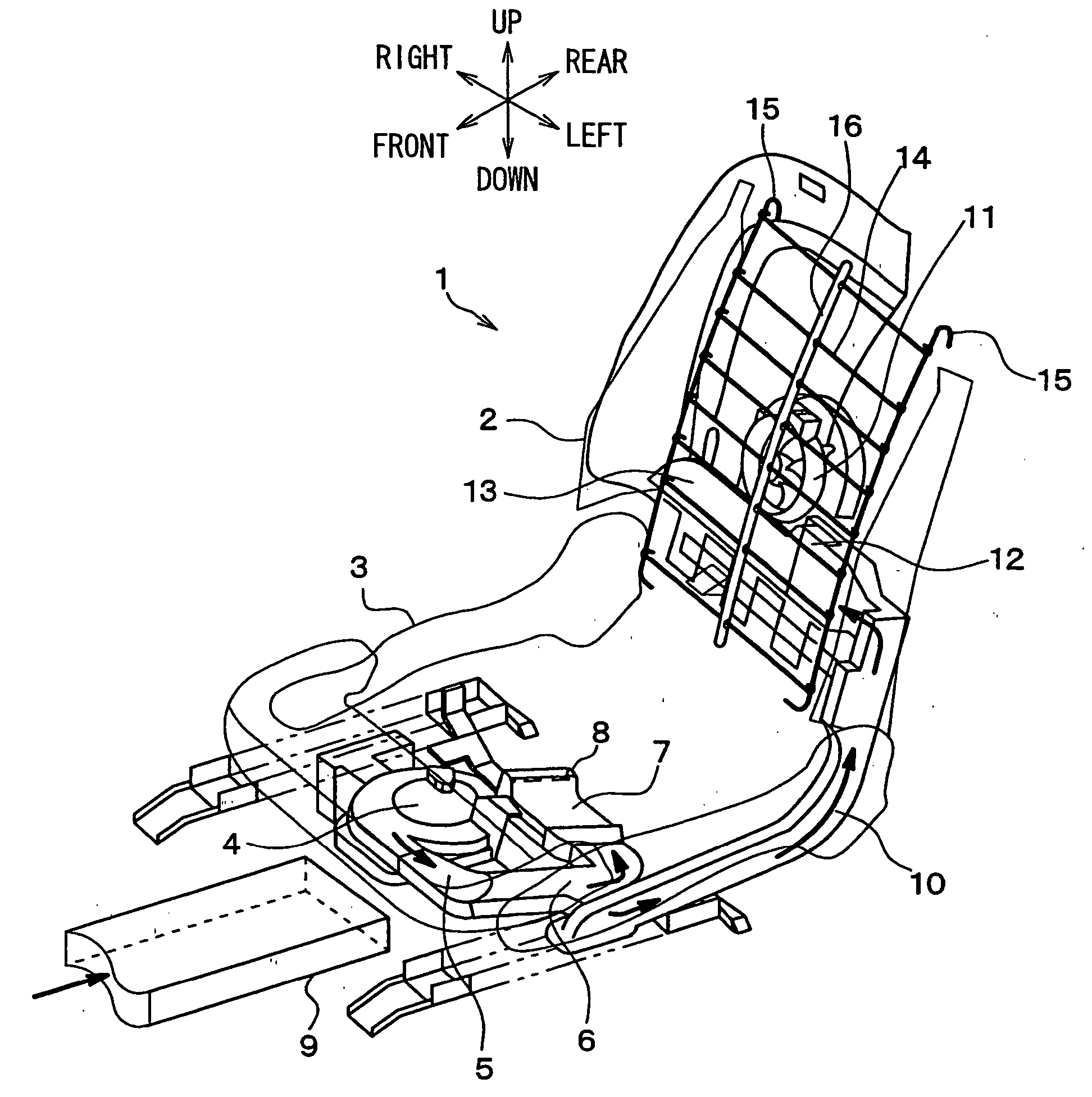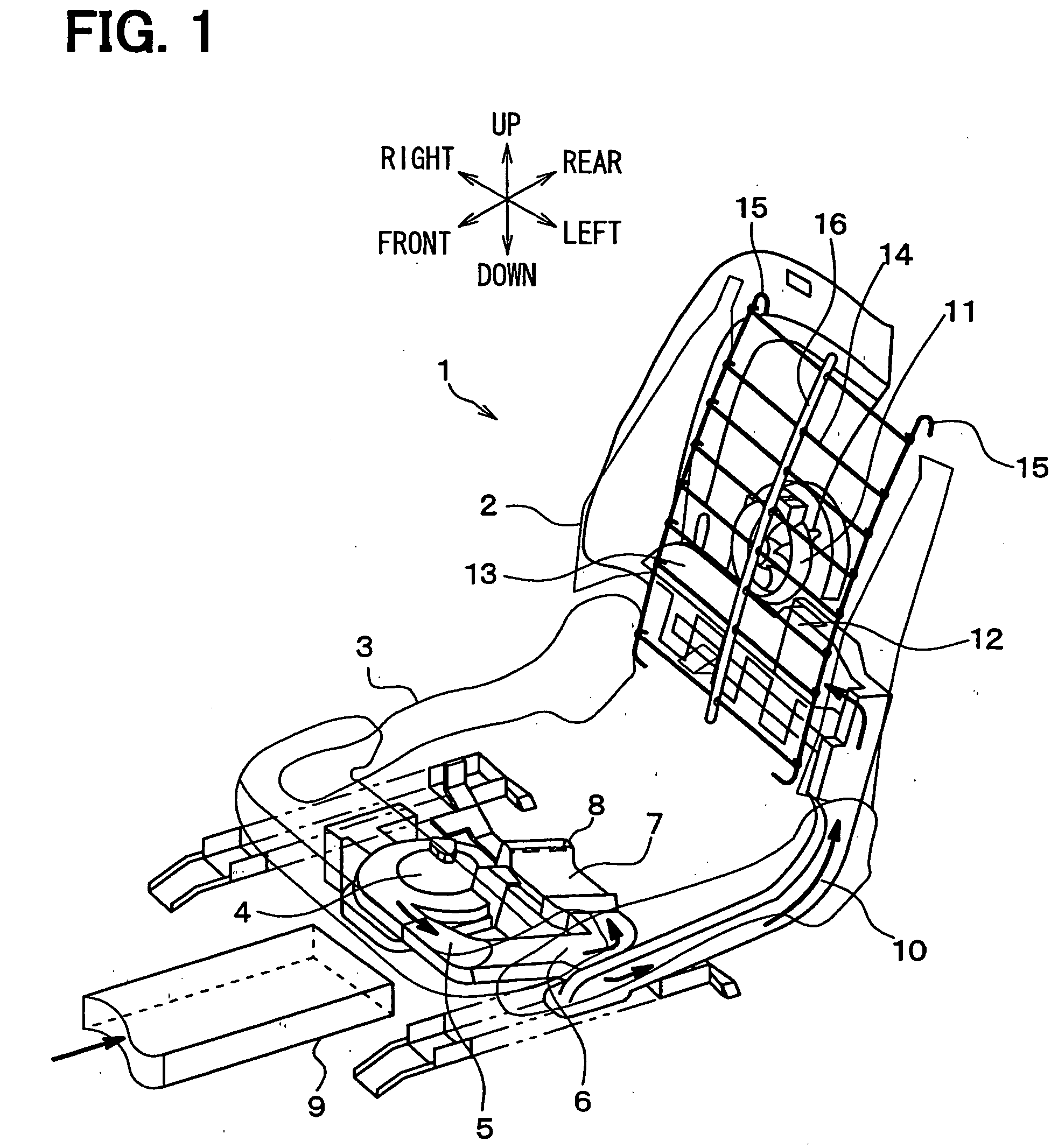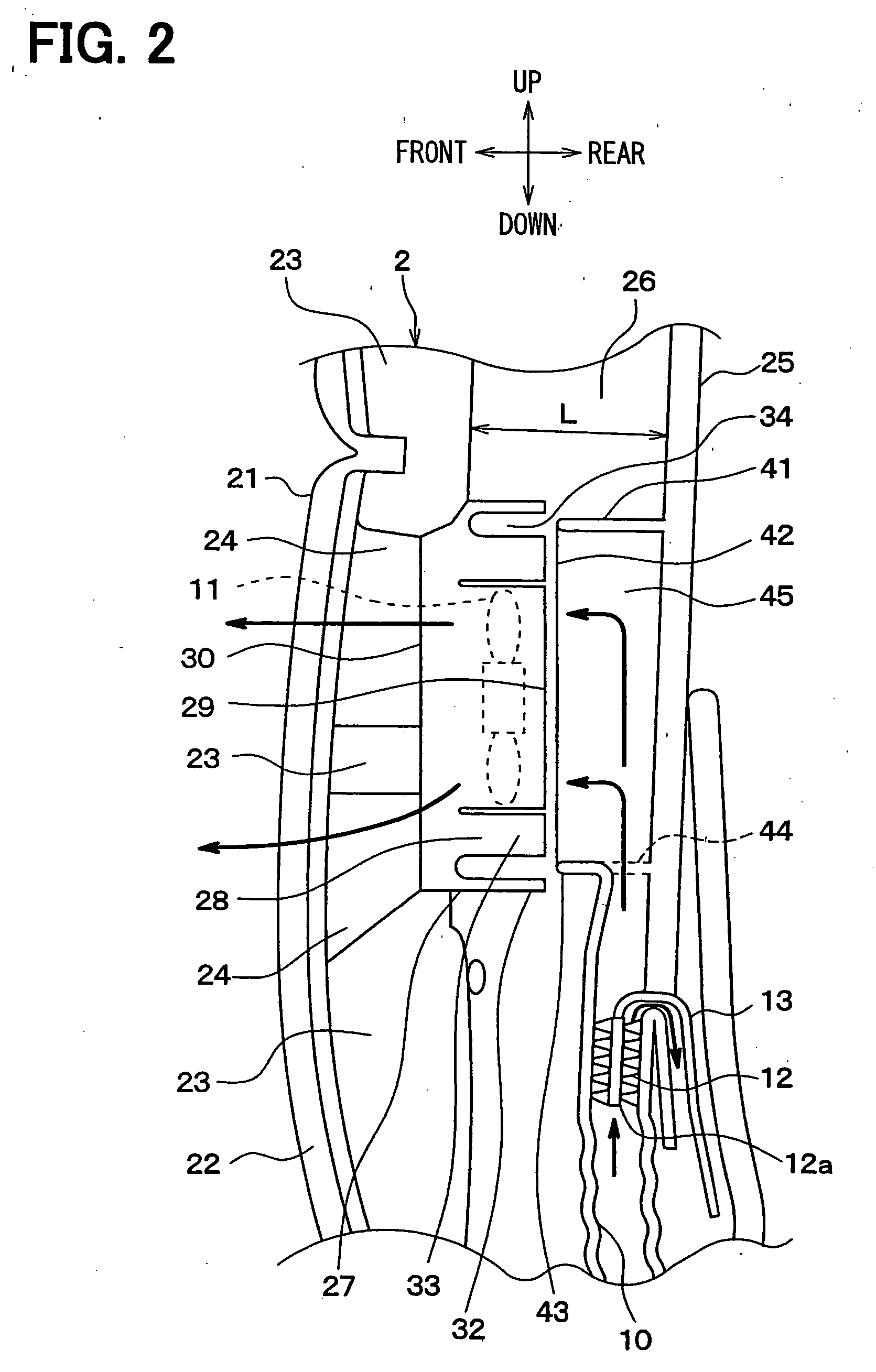Air conditioning unit for seat
a seat and air conditioning technology, applied in the field of air conditioning units, can solve the problems of limited passage space of the duct, increased pressure loss of the air in the duct, and relatively small space between the cushion member and the back board, and achieve the effect of not increasing the pressure loss of the air passag
- Summary
- Abstract
- Description
- Claims
- Application Information
AI Technical Summary
Benefits of technology
Problems solved by technology
Method used
Image
Examples
Embodiment Construction
[0017] A first example embodiment of the air conditioning unit for introducing air to a surface of a seat back will now be described with reference to FIGS. 1 to 4. A seat shown in FIG. 1 is a front seat mounted in a passenger compartment of a vehicle, for example. In FIGS. 1 to 4, arrows denote arrangement directions of a seat with respect to the vehicle.
[0018] As shown in FIG. 1, the air conditioning unit is mounted to a seat frame 1 of the seat. The seat has a seat back 2 and a seat cushion 3. The seat back 2 generally receives a load from a back of a passenger sitting on the seat. The seat cushion 3 generally receives a weight of the passenger, in particular a load from a lower half body of the passenger.
[0019] A cushion fan 4 is mounted to a frame of the seat cushion 3 under the seat cushion 3. An air passage member 5 is provided at a discharge portion of the cushion fan 4. The cushion fan 4 sucks air (inside air) existing around or under the seat cushion 3 and blows the air ...
PUM
 Login to View More
Login to View More Abstract
Description
Claims
Application Information
 Login to View More
Login to View More - R&D
- Intellectual Property
- Life Sciences
- Materials
- Tech Scout
- Unparalleled Data Quality
- Higher Quality Content
- 60% Fewer Hallucinations
Browse by: Latest US Patents, China's latest patents, Technical Efficacy Thesaurus, Application Domain, Technology Topic, Popular Technical Reports.
© 2025 PatSnap. All rights reserved.Legal|Privacy policy|Modern Slavery Act Transparency Statement|Sitemap|About US| Contact US: help@patsnap.com



